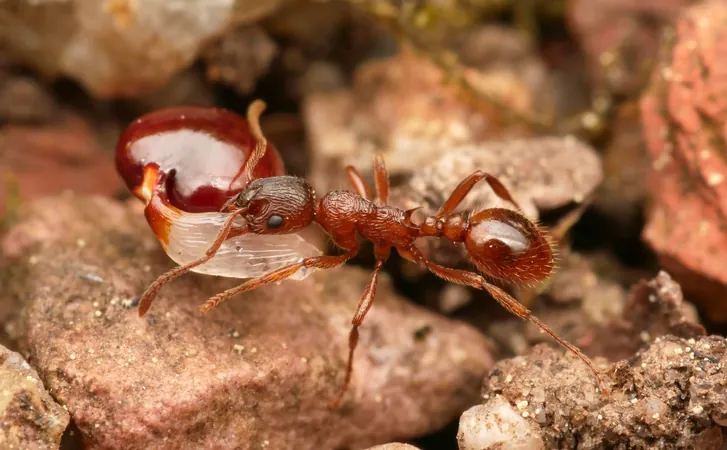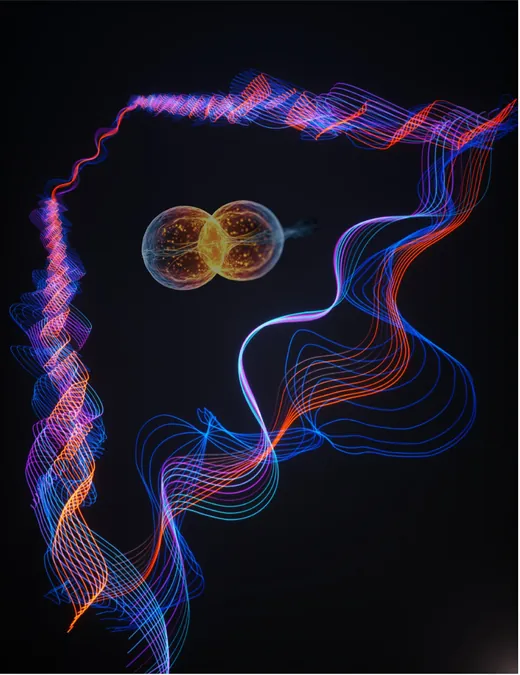
Unveiling the Secrets of Ants: How They Masterfully Fight Dehydration
2025-07-08
Author: Nur
Ants vs. Dehydration: A Battle of Survival
Insects, including our industrious ants, come equipped with a remarkable wax layer that acts as a shield against water loss. This waxy barrier is not just a protective measure; it's also crucial for communication among ants. Researchers from Johannes Gutenberg University Mainz (JGU) in Germany and Université Paris Cité in France have made a groundbreaking discovery regarding the physical properties of this wax layer, particularly its phase behavior.
The Science of Viscosity: A Closer Look
The study sheds light on the viscosity of the wax layer, revealing its resistance to flow. Remarkably, researchers found that this layer presents both gel and liquid phases, with the liquid phase displaying two distinct viscosity levels. One is as thick as honey, while the other flows like olive oil. PD Dr. Florian Menzel from Mainz University explains, "This dual viscosity allows insects to perform multiple functions of the wax layer, even amidst temperature fluctuations.”
Insect Populations in Peril
As insect populations face alarming declines due to global warming, understanding how ants adapt to high temperatures becomes critical. With their large surface area relative to volume, ants are particularly vulnerable to dehydration. Higher temperatures can cause significant water loss through their chitin cuticle, making the wax layer vital for survival.
The Wax Layer: A Balancing Act of Functions
Made of cuticular hydrocarbons (CHCs), the wax layer not only prevents moisture loss but also facilitates chemical communication among ants. It helps nestmates identify each other and coordinate tasks within the colony. However, maintaining low viscosity is essential for effective communication, while the same layer must be thick enough to block water loss.
Viscosity and Temperature: The Ant Connection
Researchers conducted experiments to see how the viscosity of the wax layer varied with temperature. They exposed ants to different climates over several weeks. As temperatures increased, they found a general trend: the wax became less viscous—similar to honey warming under heat. However, another intriguing effect emerged—ants living at 28°C showed a thicker, less fluid wax layer compared to their cooler counterparts at 20°C.
Adaptive Strategies: Ants in Action
In hot conditions, ants respond proactively, adjusting the chemical composition of their wax layer to create a more effective barrier against moisture loss. This adaptation is essential for survival and illustrates their ability to manage contrasting requirements of communication and protection.
A Complex but Fascinating Mechanism
Research also examined how acclimatization and measurement temperatures affected viscosity. Results showed that when the acclimatization temperature matched the measurement temperature, viscosity remained consistent—indicating its critical role in the function of the wax layer.
Selina Huthmacher remarked, "The complex phase behavior we observed is fascinating. It allows insects to prevent dehydration while also facilitating communication, despite the conflicting demands of these two vital functions." This revelation underscores the intricate world of ants, highlighting their incredible adaptability in the face of environmental challenges.




 Brasil (PT)
Brasil (PT)
 Canada (EN)
Canada (EN)
 Chile (ES)
Chile (ES)
 Česko (CS)
Česko (CS)
 대한민국 (KO)
대한민국 (KO)
 España (ES)
España (ES)
 France (FR)
France (FR)
 Hong Kong (EN)
Hong Kong (EN)
 Italia (IT)
Italia (IT)
 日本 (JA)
日本 (JA)
 Magyarország (HU)
Magyarország (HU)
 Norge (NO)
Norge (NO)
 Polska (PL)
Polska (PL)
 Schweiz (DE)
Schweiz (DE)
 Singapore (EN)
Singapore (EN)
 Sverige (SV)
Sverige (SV)
 Suomi (FI)
Suomi (FI)
 Türkiye (TR)
Türkiye (TR)
 الإمارات العربية المتحدة (AR)
الإمارات العربية المتحدة (AR)